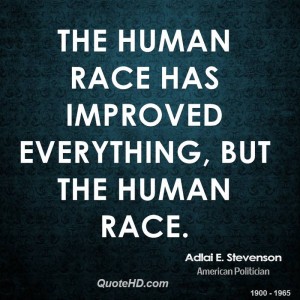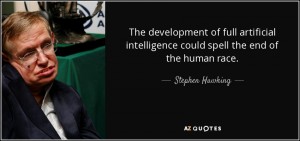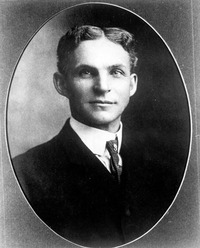
The writer in me loves to read everything, and especially books. Last weekend, I read Digital Gold: Bitcoin and the Inside Story of the Misfits and Millionaires Trying to Reinvent Money by Nathaniel Popper about the origin and history of cryptocurrencies and the blockchain. It is a well-written and fascinating read by the New York Times reporter, and is full of tales about Internet legends like Reid Hoffman and the Winklevoss twins.
Here’s the interesting part for people like us who are worried about capturing current internal expertise for future business growth. One of the major concerns of workers is that they will be replaced by robots, and it is a legitimate concern because it happens every day. Business owners are always looking for ways to do things more consistently, efficiently and cheaply, and robotics solves that problem. However, when you replace humans, you also introduce the problem of displaced workers. The social implications are astounding so we won’t go there. But we will look at two things to think about as the uptake of robots and artificial intelligence (AI) affects capturing internal expertise:
- If you plan to “hire” robots to do the jobs of humans, you may conclude you don’t need to capture human knowledge. Human skills are so “Encyclopedia Britannica”. Those companies looking toward the future are living in the gap, waiting for the next wave of industrialization that antiquates their current business model and their need for training humans.
- If you eliminate human workers, how do you pay robots? I figured robots are a capital expense like buildings and machinery but believe it or not, economists are now working out how to pay for the “labor” of robots which puts them in the category of “worker”. AI robots may be your experts of the future. This is where cryptocurrency comes in. You can “pay” robots in cryptocurrency. It’s right there in the book Digital Gold on page 294.
“Like many [Silicon] Valley firms, Andreesen’s was thinking about intelligent robots, and Bitcoin seemed like a perfect medium of exchange for two machines that needed to pay each other for services.”
Breathe.
This caught my attention because it is clear a lot of the forward-thinkers who are instituting new systems of work, the economy, the social structure, and so on are pondering these questions. If they succeed, theoretically it frees the rest of us to be creative and pursue our passions while being supported by a basic income supplied – I assume – by the robots’ productivity.
Seriously, people are having these discussions right now. You may have heard Mark Zuckerberg called for Universal Basic Income (UBI) in his Harvard Commencement address last week. It’s a real thing. The robots work, get paid in cryptocurrency, are potentially taxed on their labor and we get paid from the labor of robots to take macramé classes. I don’t know about you, but I’m bored just thinking about it.

I Don’t Digress
You may think I digress from our regularly scheduled topic of capturing and retaining your corporate subject matter expertise. This actually is not a digression at all. This discussion is essential to our topic of whether human knowledge is important, essential, needs to be captured and carried on – or really has any value at all – in light of the rapid progress in robots and artificial intelligence. For those of us who follow developments in the training world, you know that we are learning how to train robots. I think they have made the leap that robots can now acquire learning that builds on prior knowledge – you know, the same way we silly old humans learn.
If you believe the future is here, you are right. If you believe you still have to operate in the present, you are also right.
For those of us still living in the pre-AI world before we all receive a Universal Basic Income, we need to continue to contend with the issues of knowledge capture, retention and transfer between generations of workers for the ongoing success of your enterprise.
Retaining Human Knowledge Until the Robots Take Over
If your experts flee to retirement or leave your organization for any other reason, you are still vulnerable to losing valuable knowledge, skills and attitudes to fulfill your mission effectively, efficiently and in a cost-responsible way today.
What are you doing right now to make sure you keep your expertise under your roof even if your experts leave?
Here’s what I can do to help you raise awareness about these issues in your organization:
- Speak to your organization’s decision makers to help them analyze their risk of losing valuable expertise
- Explore which workshops can help you dissect your organization for areas where you are vulnerable to losing your critical experts
- Help you identify and work with individual experts in your organization
Think about it.
Until the robots take over, you still need a plan!
Are you vulnerable to losing valuable human expertise? Is your company living in the present, the past or the future? Please comment below.









